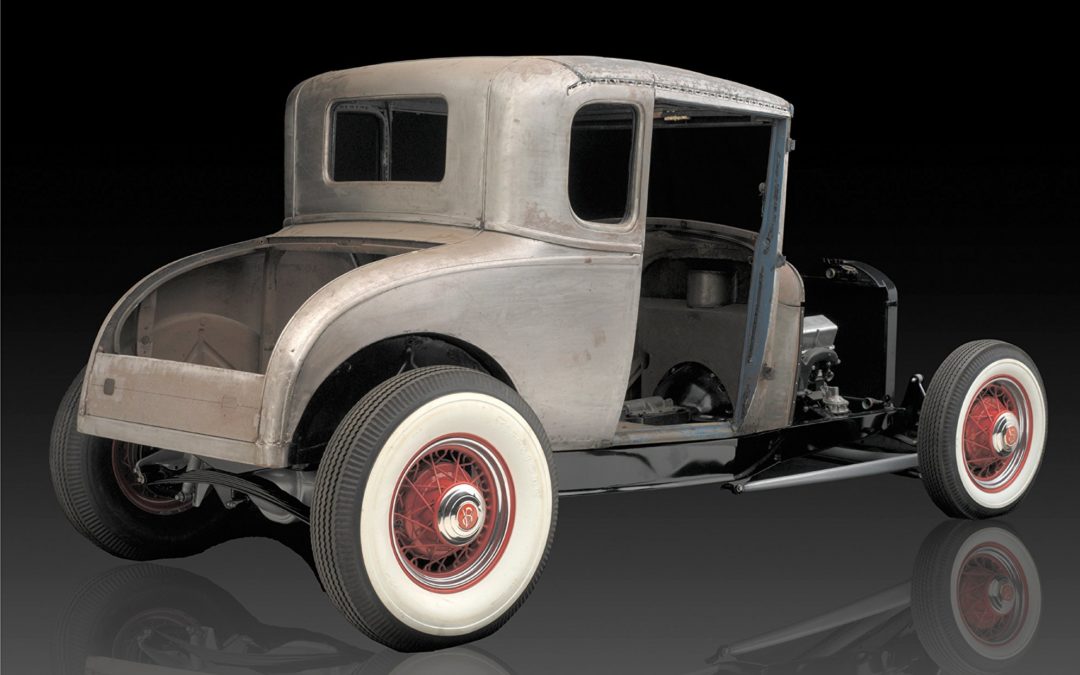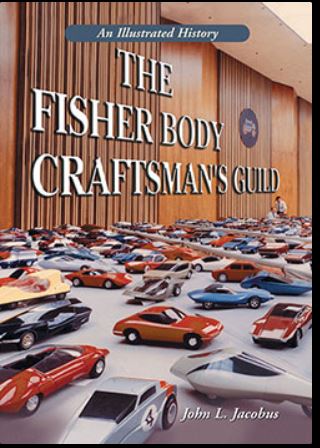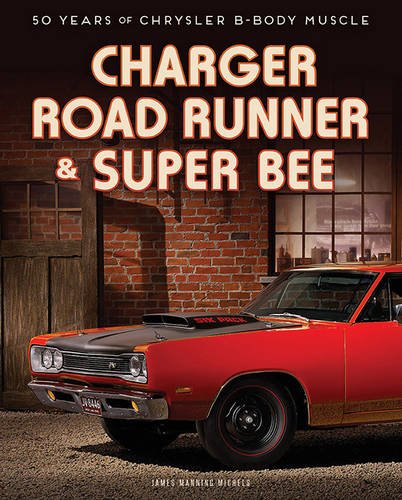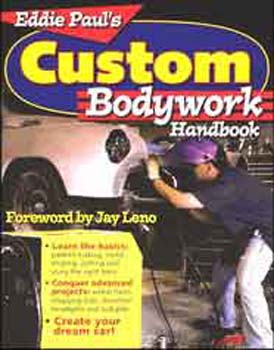
You’re building a hot rod. The first step is the chassis. If it’s not right, the car won’t handle well. If it’s really not right, the car might destroy itself. There are choices to be made, from frame rails to suspension components, and some combinations will work better than others. Next is the body. This is what everyone sees first. It’s what makes a hot rod a hot rod. This book is a sure-fire guide to the best approach. Veteran builder and writer Dennis Parks walks you through the whole process, from finding and using existing panels to choosing New Old Stock panels from the aftermarket. The Hot Rod Body and Chassis Builder’s Guide offers fool-proof advice for building the hot rod of your dreams.

Forty years after its introduction, the Fox Body Mustang has come of age, and this new book chronicles all the best procedures for restoring these affordable yet appreciating classics!
In this new Restoration series title from CarTech, all the procedures and best practices for restoring your Fox Body will be covered. Chapter subjects include a history of the cars, tools, and equipment required; body repair; interior refurbishment; the climate control system; wheels; engine and driveline rebuilding; electrical troubleshooting and repair; and finally a large index of Fox Mustang facts, including paint codes, production numbers, option codes, data plate decoding, and more.
Never before has Fox Body Mustang restoration been covered in a full-color instructional format. If you are considering a full-blown restoration, or would just like some good advice on how to repair certain sections of your car, this restoration guide is a valuable tool in your toolbox.

New Updated & Revised Edition
How to Restore Classic Car Bodywork is an invaluable guide for the home restorer of any vintage or classic car. Coverage includes: tools; panel removal/fitting; sectional repairs; sills, floors and outriggers; chassis members; multiple panel assemblies; welding; metal forming techniques; tricks of the trade, and much, much more.
11179

The Fisher Body Craftsman’s Guild was a national auto design competition sponsored by the Fisher Body Division of General Motors. This competition was for teenagers to compete for college scholarships by designing and building scale model “dream” cars. Held from the 1930s through the 1960s, it helped identify and nurture a whole generation of designers and design executives.
Virgil M. Exner, Jr., Charles M. Jordan, Robert W. Henderson, Robert A. Cadaret, Richard Arbib, Elia ‘Russ’ Russinoff, Galen Wickersham, Ronald C. Hill, Edward F. Taylor, George R. Chartier, Charles W. Pelly, Gary Graham, Charles A. Gibilterra, E. Arthur Russell, William A. Moore, Terry R. Henline, Paul Tatseos, Allen T. Weideman, Kenneth J. Dowd, Stuart Shuster, John M. Mellberg, Harry E. Schoepf, and Ronald J. Will, are among those designers and design executives who participated in the Guild. The book also describes many aspects of the miniature model Napoleonic Coach and other scale model cars the students designed.

Contestants Recall the Great General Motors Talent Search
From 1930 to 1968, General Motors sponsored a 1:12 scale model automobile design competition for youth—the famous Fisher Body Craftsman’s Guild. Each year thousands of boys and young men from across America competed for scholarships by designing, building, and submitting a scale model of their own “dream car,” to be judged on such qualities as design originality and craftsmanship. A public relations bonanza for GM, the program helped to identify and nurture a generation of future leaders in design engineering, automotive design, automotive styling, industrial design and other endeavors.
In these essays, more than 30 Guildsmen chronicle their experiences in the competition, revealing their model car design techniques, tricks, and secrets: Philip J. Rauth, Joseph R. Rauth, Herman I. Rauth, Roger D. Teter, Gordon D. Williams, William A. Keyser, Jr., Warren M. Bakken, Wilfred C. Keagy, Arnold L. Joslin, Raymond P. Wykes, Charles R. Foreman, Adrian A. Bruno, Charles H. Stewart, George E. Anderson, William D. Scott, Walter F. O’Neill, Jr., Thomas L. De Fazio, Felix R. Collazo, Ronald J. Will, Roger L. Schneider, Thomas L. Covert, Paul F. Bonfilio, George G. Herzog, Samuel T. Kjellman, Frederick J. “Bud” Magaldi, Geza A. Loczi, Jeffrey A. Jones, Robert W. Lawhn, Tom W. Graboski, Terry P. Graboski, Spencer L. Mackay, Grant Onnie, John L. Jacobus and John M. Mellberg.
Panel Beating & Body Work
Mopar B-Body Restoration
Complete Guide to Auto Body Rep

From the Charger to the Road Runner and Super Bee, through the Shelby era, and to the 21st century Charger, don’t miss a single moment of Chrysler’s 50 years of muscle car dominance.
In 1966, a proper muscle car roared onto the market: the Dodge Charger, the first Chrysler product designed specifically for the baby-boom market. Within a couple of model years, the Charger went from stodgy to sexy, so much so that it became a darling of film and television, appearing in many of the hit cult films produced by the maverick breed of filmmakers taking over Hollywood at the time.
Even more important than the Charger were the B-Body muscle cars it spawned, especially the Plymouth Road Runner, which became one of the most popular muscle cars of the era. Dodge followed with a similar performance car, the Super Bee.
Charger, Road Runner & Super Bee: Fifty Years of Chrysler B-Body Muscle tells the entire B-Body story, from the original Dodge Charger through the popular Charger being sold today. The glory years of 1966 to 1971 are the focus, but the years between then and now are covered as well. During that time, the Charger first became a personal luxury car swaddled in Fine Corinthian Leather, then a hot hatchback imbued with the great Carroll Shelby’s mojo. Charger’s triumphant return to form beginning in 2006 wraps up this compelling, 50-year story of one of America’s great performance cars and its siblings.

“Antique Auto Body Top Work for the Restorer,” by Herbert J. Butler. This book faithfully reproduces top data originally appearing between 1904 and 1926 in rare American trade publications, together with relevant British material: an overview chapter from “Motor Body Work” (1924) by the grand authority Herbert J. Butler, and selections from “Motor Body Building” (1914) by the early masters C.W. Terry and Arthur Hall. A variety of representative tops are described, and from these the precise design and measurements of a particular top reconstruction today may be determined by the individual restorer. In the early years of the automobile tops were thought of as accessories; they were often not built by auto makers, but by accessory manufacturers. As a result, the same model of car may have come with several different tops, any of which would be appropriate for a restoration today. You will find expert advice, historical data, and detailed instructions for the extension Top or Cape Hood, with information on: dimensions from body measurements, early development/construction, bows, sockets, joints, production design, the apron or storm front, oiling old straps, and much more. Find out about tops for particular body types, such as the Victoria, touring car, roadster, cabriolet, convertible, and even some commercial or omnibus applications. Includes illustrations, diagrams, drawing, design and construction of every body type. 127 pages, soft bound. Year Application-General.

“Antique Auto Body Wood Work for the Restorer” by C.W. Terry with Arthur Hall. This book is largely drawn from “Motor Body Building,” which was published in London and New York in 1914 – the top text in the field, written by Britain’s best experts. You will find details of the principles of design from that era, rules of thumb for proportions of particular body types, and specifications for the wood & metal typically used on bodies. Learn about principles of putting together bodies in that era, such as the selection of timber, ways of chassis framing, design for weight & accommodation, constructing the framework, kinds of joints used in framing, strength and stiffness of materials, stress & strain, panel work, iron work, mounting (to allow for movement), doors & pillars, mudguards, methods for making corners in wood, and much more. The authors give detailed instructions for creating design drawings from the side elevation, cant board (side seen from top), the chassis line, sweeps, proportion in seating, and what makes a good design. Includes illustrations, diagrams, drawing, design and construction of body types, including: Limousine, Limo with quarter windows, limo with fishtail back, limo with round quarters, Cabriolet, Convertible two-seater, Touring (Torpedo), Landaulet, Landaulet with quarter windows, flush side body, and detachable Tonneau (convertible 2-4). 127 pages, softbound . Own this hard-to-find information on a golden age of automobiles.
John R. Miller
John R. Miller

This 16 page book lists all the parts used on the 1 Ton Trucks as well as numerous illustrations of body choices. Year Application 1909-1927.

Now you can learn from master movie car customizer, Eddie Paul, in Eddie Paul’s Custom Bodywork Handbook. Discover how this Hollywood wizard handles everything from old-school top chops on 1940s Fords, to cutting-edge bodywork on modern high-revving tuner cars.
Learn secrets to:
Selecting and using the proper metal and tools
Simple and complex metal fabrication, from shrinking and stretching, to challenging rust repair
Pattern making, vacuum forming, working with wooden forms and creating your own custom parts from scratch
Traditional bodywork projects, such as frenched headlights and taillights, fender flares, custom hoods and grilles, and bedding glass
When Hollywood needs a fabulous movie car, they turn to Eddie Paul. Now, with Eddie Paul’s Custom Bodywork Handbook, so can you.

Eddie Paul’s Paint and Bodywork Handbook will inspire you to see your cars and motorcycles as more than vehicles, and find the “customizer” inside of you.
Body Work Basics & Techniques
Automotive Bodywork & Rust Rep
Villiers Everybody’s Engine













